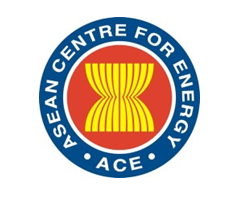The Past, Present, and Future Role of Coal in the ASEAN Energy Landscape

October 7, 2025 - Coal has long been a cornerstone of ASEAN’s energy system, underpinning economic development, energy security, and industrialization. It has shaped national growth paths, sustained local livelihoods, and provided the affordable, reliable power needed to meet surging demand. Yet the very qualities that entrenched coal as the dominant fuel now pose urgent challenges. It is ASEAN’s single largest source of emissions, and its continued expansion risks locking the region into a high-carbon trajectory that conflicts with the AMS’ net-zero and carbon-neutrality commitments by mid-century.
Tracking ASEAN’s progress reveals a transition landscape defined by both momentum and inertia. The report tracked coal transition progress in the four largest coal users in the region: Indonesia, Malaysia, the Philippines, and Viet Nam over the past five years. Four challenges behind the slow progress are identified:
-
Policy fragmentation arises from misalignment between international decarbonization commitments and domestic energy realities. Public pressure for rapid coal phase out frequently clashes with regulatory caution, leading to policy adjustments and exemptions.
-
Energy security priorities in the rapidly industrialising AMS drive continued CFPP support, especially smelters, despite long-term decarbonization goals.
-
“No new CFPP” policies often exclude projects already approved or under construction, allowing pipeline projects to add new capacity even as governments pledge caps.
-
Financial barriers hinder accelerated phase-out. Costs from asset write-downs, penalties from Power Purchase Agreements (PPAs), and renewable infrastructure needs force the AMS to rely heavily on international funding for early retirements and clean transitions.
Moreover, while coal operations are gradually adopting cleaner practices through digitalization and renewables integration, these measures remain incremental. They primarily target operational efficiency and local pollution control, rather than the deep decarbonization required to align with climate goals.
The report highlight three strategic imperatives to guide the next phase of policy design and regional cooperation in supporting coal transition in the region:
-
The most pressing challenge is to stop the cycle of lock-in. Continued expansion of unabated coal capacity risks undermining both national and regional transition strategies. ASEAN should establish stronger monitoring, reporting, and verification (MRV) systems for both carbon and methane, harmonising data across the AMS to build credibility, guide investment decisions, and demonstrate measurable progress. Without these measures, incremental efficiency gains will be eclipsed by rising emissions from new capacity.
-
ASEAN must craft coal phase-down strategies that reflect national realities, while remaining aligned with long-term climate goals.These should prioritize the retirement of the least efficient plants, while supporting interim efficiency upgrades where necessary to maintain energy security. In parallel, the region should explore alternative uses of coal reserves beyond combustion.
-
Phasing down coal will reshape not only energy systems, but also local economies and labour markets.Coal-dependent regions face risks of job loss, shrinking fiscal revenues, and community disruption. A just transition must therefore extend beyond technical fixes to include reskilling, social protection, and economic diversification. Opportunities lie in diversifying into critical minerals and renewable industries, which share governance frameworks and skill overlaps with the coal sector.
This report concludes that ASEAN’s coal trajectory is best understood as one of managed decline and strategic reconfiguration. The forthcoming ASEAN Plan of Action for Energy Cooperation (APAEC) 2026–2030 must reflect this reality. It should move beyond a narrow focus on clean coal technology towards a comprehensive transition framework that integrates clear phase-down pathways, alternative uses of coal, transition finance mobilisation, and people-centred strategies.
Coal underpinned ASEAN’s growth in the past. Its continued role in the near term is inevitable, but its future must be redefined. The challenge for ASEAN is to manage coal’s decline in a way that secures reliable energy supply, safeguards workers and communities, and positions the region as a competitive, resilient, and sustainable energy system for decades ahead.

